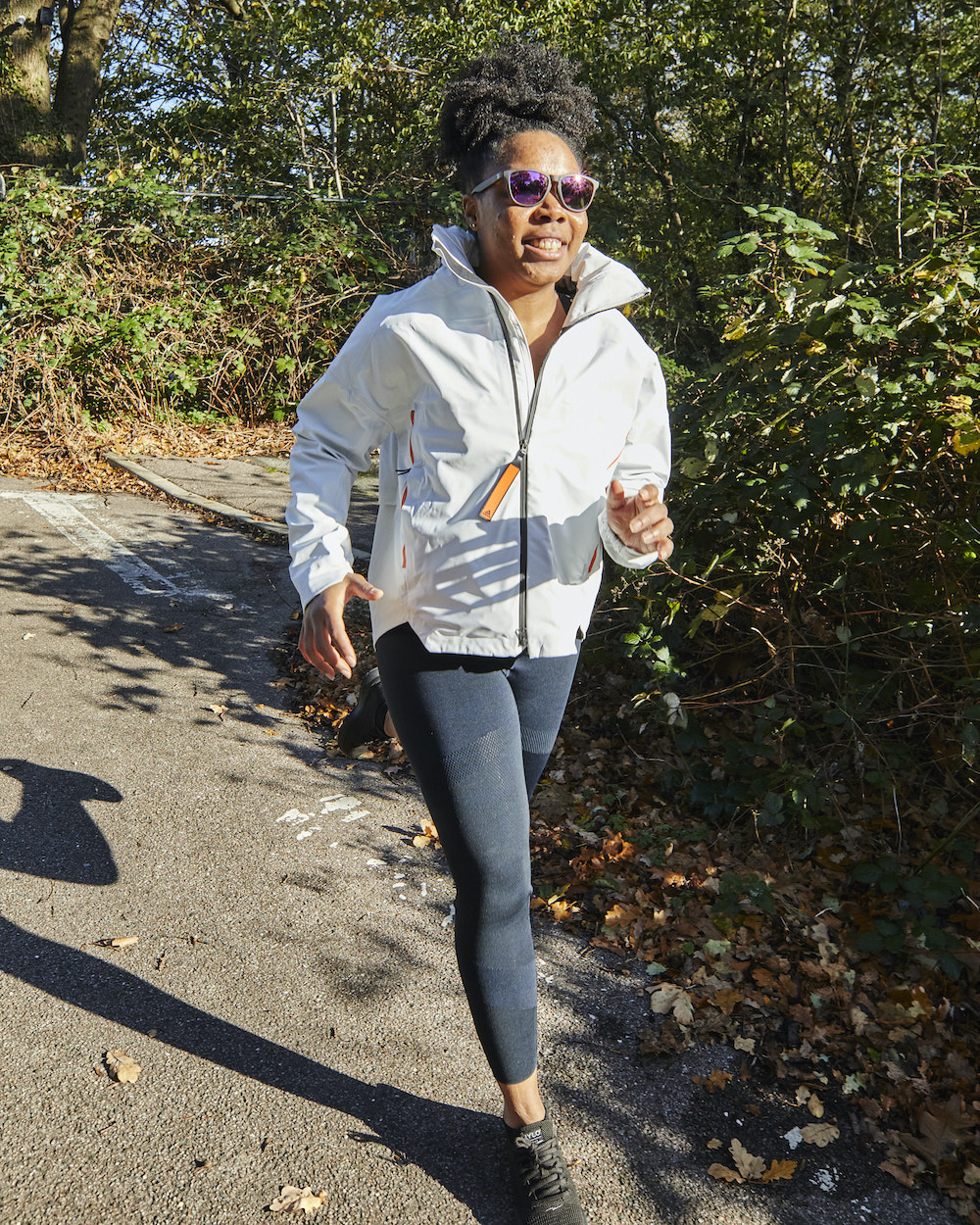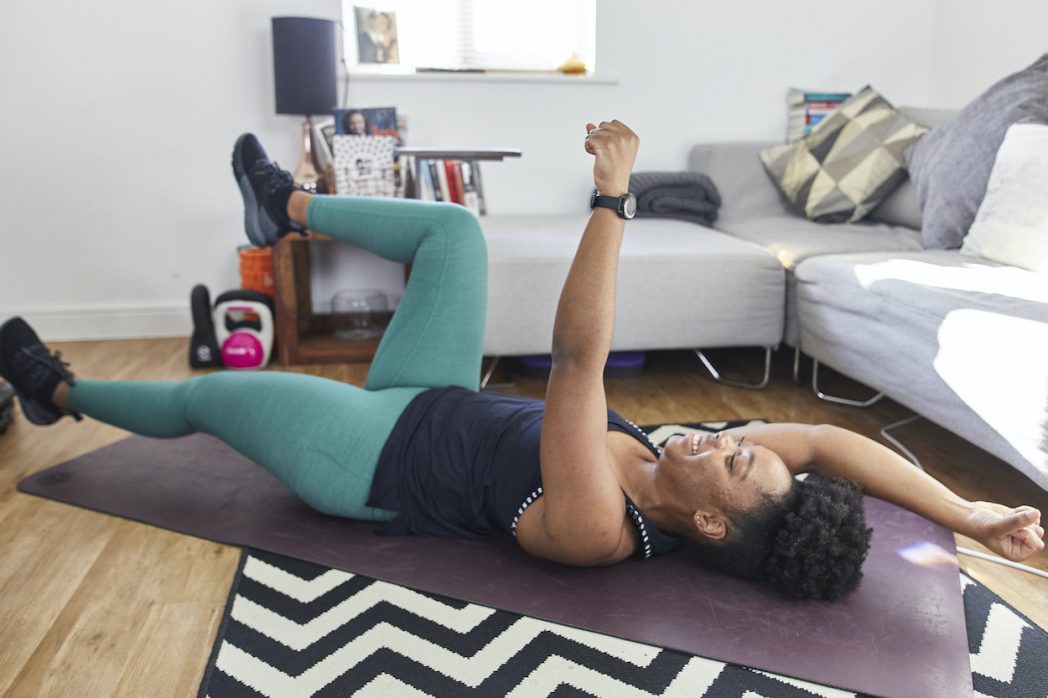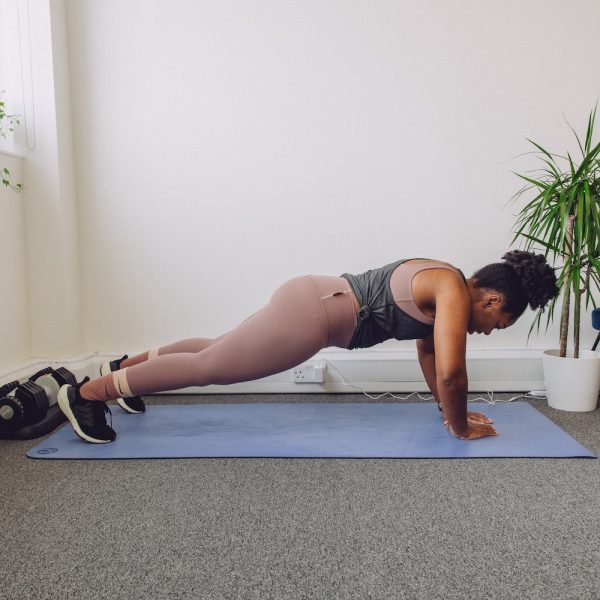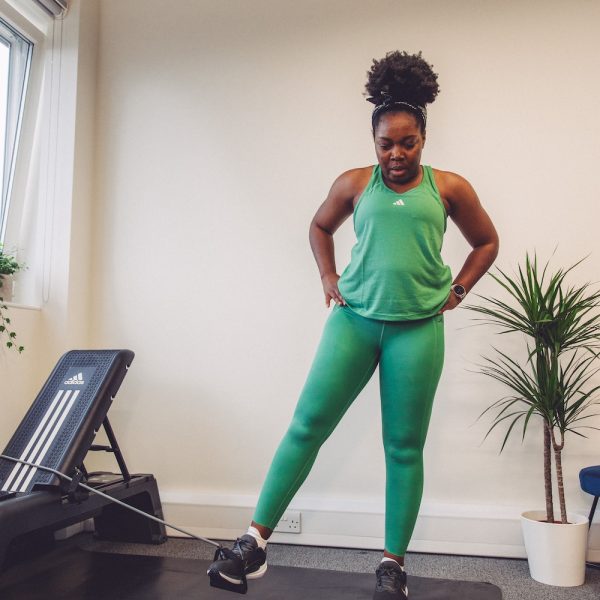
If you’ve been suffering from knee pain when running or cycling then read on to find out some of the the common causes, symptoms as well as ways to manage and prevent injuries.
Being a self confessed, running re-starter, I’m always conscious about not jumping right back in at the deep end. And that’s for a number of reasons. Firstly, due to my experience of having chondromalacia patellae as a teenager which caused me chronic knee pain when running. And secondly because I know how quickly I (we) lose running fitness and I don’t wanna make it more ‘painful’ than it has to be.
In more recent years I’ve found a passion for cycling which comes with the benefit of reduced impact in comparison to running. I know soooo many injured runners turned cyclists too – and injured runners are something I want to contribute to reducing numbers of!
A while back, I got our resident Sports Therapist & MSc Osteopathy Student Modestas to share some ankle strengthening for runners with us and now he’s back sharing some tips for cyclists and runner to keep our knees healthy whilst helping to reduce and manage knee pain .
Modestas says that if you love riding or enjoy going out for the run, but feel that your knees are letting you down, you shouldn’t just ignore any knee pain and hope that it will resolve on its own. It’s always best to try and see a therapist before it becomes a chronic issue.
There are a number of common knee injuries which can be sustained during repetitive physical activity such as running or cycling, however, there are several ways to reduce the risk of developing these issues. Here I will share some common running and cycling injuries and advice on how to look after yourself.
More From Modestas:
- Foot Pain When Running Caused By Plantar Fasciitis?
- Dealing With Shin Splints – Symptoms & Treatment
- Ankle Strengthening For Runners
- 3 Effective Exercises For Glute Activation
When it comes to cycling there are few aspects which should be considered to reduce the risk of injury. Probably the most important part is your bike fit. A poorly fitted bike is a recipe for disaster. Another important aspect is your technique and training load. Taking on too much too quickly will predispose you to an injury.
Knee Pain From Cycling

Some common cycling knee injuries include:
- Pes anserine tendinopathy and bursitis
- Patelofemoral pain syndrome
- Illiotibial band syndrome
Let’s delve a little deeper into each of these.
Pes Anserine Tendinopathy Or Bursitis
Pes anserine tendinopathy or bursitis affects the Pes anserine insertion which is located on the inside of the knee just below the kneecap. It attaches the tendons of three muscles; two of which are located at the back of your thigh and one goes over the front of your thigh.
Tendinopathy Symptoms, CauseS and Management
- Symptoms: Pain on the inside of the knee just below the kneecap. Usually comes on with activity. Depending on the severity of the injury, it may subside or it may worsen with activity. You might also feel a ‘popping’ sensation at the back of your inner thigh too.
- Causes: Tight hamstring muscles, poor bike fitting most likely saddle being too high and weak core and glutes.
- Management: Stretch and foam roll hamstrings regularly. Implement core, glute and hamstring strengthening exercises and adjust the saddle. You might have to reduce your time on the bike.
Bursitis Symptoms, CauseS AND MANAGEMENT
- Symptoms: Pain on the inside of the knee just below the kneecap. Pain usually worsens with activity. You may also notice a puffiness at the area.
- Causes: Tight hamstring muscles, poor bike fitting most likely saddle being too hight and weak core and glutes. It may also come on due to overtraining.
- Management: Stretch and foam roll hamstrings regularly. Implement core, glute and hamstring strengthening exercises and adjust the saddle. You might have to reduce your time of the bike.
Patellofemoral pain syndrome
Patellofemoral pain syndrome affects the patella tendon which is located at the front of the knee and attaches the quadriceps muscle to the shin bone. It is a very common overuse injury.
Symptoms, CauseS AND MANAGEMENT
- Symptoms: Pain at the front of the knee which is present at the beginning of the activity. Depending on the severity of the issue it may progress or subside with physical activity.
- Causes: Very tight quadriceps muscle and poor bike fit, usually saddle being too low. It may also occur due to overtraining.
- Management: Regular stretching and foam rolling of the quadriceps muscle. Strengthening core and glutes. Moderating the training load.
Illiotibial Band Syndrome
Illiotibial band syndrome affects the Illiotibial band (ITB) which is located at the outside of the thigh. The ITB attaches on the outside of the knee just below the kneecap.
Symptoms, CauseS and MANAGEMENT
- Symptoms: Pain on the outside of the knee just below the knee cap which gets worst with activity.
- Causes: Insufficient flexibility of the quadriceps, hamstrings and glutei. Poor bike fit may also contribute to the injury particularly saddle being too low. Poor glute strength is also an important aspect which may contribute to the injury.
- Management Ensure that your bike fit is set up well. Strengthen the glutei and core muscles and stretch and foam roll regularly.
Knee Pain From Running

Many common running injuries are the same as common injuries in cycling, however, they have different causes. A few things to consider when running are your footwear, technique and terrain.
Hard terrain usually places extra strain on your joints, hence, running on your mid foot or toes will provide you with more ‘shock absorption’. Footwear may impact your running too, if the footwear is not comfortable it might change the foot biomechanics during landing which may impact the knee joint.
Some common running knee injuries include:
- Patelofemoral pain syndrome
- ITB syndrome
- Pes anserine tendinopathy
Patellofemoral Pain Syndrome (Runners Knee)
Patellofemoral pain syndrome affects the patella tendon which is located at the front of the knee and attaches the quadriceps muscle to the shin bone. It is a very common overuse injury.
SYMPTOMS, CAUSES AND MANAGEMENT
- Symptoms: Pain at the front of the knee which is present at the beginning of the activity. Depending on the severity of the issue it may progress or subside with physical activity.
- Causes: Running up or downhill excessively, overtraining, tight quadriceps, weak core and glutes or increased weight.
- Management: Regular stretching and foam rolling of the quadriceps muscle. Strengthening core and glutes. Moderating the training load and balancing between hills.
Illiotibial Band Syndrome
ITB Syndrome SYMPTOMS, CAUSES AND MANAGEMENT
- Symptoms: Pain on the outside of the knee just below the knee cap which gets worst with activity.
- Causes: Insufficient flexibility of the quadriceps, hamstrings and glutei. Poor glute and core strength.
- Management: Strengthen the glutei and core muscles and stretch and foam roll regularly.
Pes Anserine Tendinopathy
SYMPTOMS, CAUSES AND MANAGEMENT
- Symptoms: Pain on the inside of the knee just below the kneecap. Usually comes on with activity. Depending on the severity of the injury, it may subside or it may worsen with activity. You might also feel a ‘popping’ sensation at the back of your inner thing too.
- Causes: Tight hamstring muscles, poor glute and core strength and overtraining.
- Management: Stretch and foam roll hamstrings regularly. Implement core, glute and hamstring strengthening exercises.
Treating Knee Pain and Aches
There is no one size fits all approach when treating aches and pains in your knees, however, there are few general exercises which can help you to reduce the risk of developing an injury and try to manage it.
Foam rolling:
Focus on…
- Hamstrings
- Quads
- Glutes

Check out the 30 minute guided foam rolling video here on keep it simpElle especially if you’re new to foam rolling, as well as live classes which are available throughout the week.
Stretching:
Focus on…
- Hamstrings
- Quads
- Glutes
If you need some help with stretching, you can grab a copy of my post run stretch and recovery guide which features the best post run stretches as well as some guidance on foam rolling.

Strengthen:
Exercises to strengthen lower body include:
- Glute bridge on heels
- Clams
- Dead bug (pictured above)
- Lunges
Well, I have the perfect class for you on my timetable – Badass – 45 minute lower body focus to strengthen where you need to.
If you’ve been suffering with any knee when running, or after running, then I hope this post has come some way to encourage you to seek further help or to add exercises, regular stretching and foam rolling to your routine.
Drop us a comment below or get in touch if you have any further questions!
Happy running and / or cycling!
Elle





![Finally feel ready to add running back into my repertoire 🥰 starting with couch to 5km of course… goal being to actually finish it for once 🫠 today I started week 2 👉🏾 slide 3, joined by Ian who found my little Loughton meet up (which I started back in 2021 I think) via a takeover I did on @strava 🙌🏾To keep me on track, I’ve signed up for Hackney 5km (it’s an annual tradition now) and the @thelondon10k in July (⚠️ entries are still open friends!)Let’s connect on Strava? Comment Strava below and I’ll send you my link, you send me yours back ✨[running the 10km on a media bib]#couchto5k #runwalk #keepitsimpelle #runninggoals #strava #stravarunning #thisgirlcan #thisgirlcanrun #thisgirlcanessex #fitnessjourney #buildingabase](https://www.keepitsimpelle.com/wp-content/plugins/instagram-feed/img/placeholder.png)

Leave a Reply